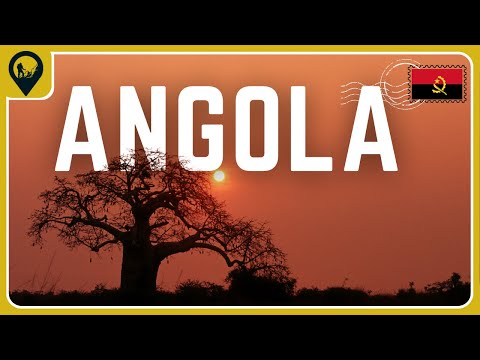
Nestled along the western coastline of Southern Africa, Angola remains one of the most intriguing and underexplored destinations on the continent. With a history marked by Portuguese colonization, a protracted independence struggle, and a long civil war, today’s Angola emerges as a nation rich in cultural diversity, natural beauty, and economic potential. As we look ahead to 2024, here’s your guide to exploring this vibrant land.
## Diverse Landscapes
One of Angola’s greatest treasures is its varied landscapes — from rainforest-covered mountains in the north to the arid deserts of the Namibe province in the south. The country also boasts some stunning beaches along its Atlantic coastline.
### Kissama National Park
Just a couple hours’ drive from Luanda, Kissama is an accessible escape into nature. The park has seen successful efforts to repopulate wildlife decimated during wartime periods. Today, visitors might spot elephants, water buffaloes, and indigenous birds.
### Tundavala Gap
For those willing to venture into more rugged terrains, the Tundavala Gap in Huíla province offers breathtaking vistas. It is an immense natural fissure in the plateau that drops sharply down hundreds of meters —a panorama deserving of any traveler’s bucket list.
## Cultural Richness
Angola’s history is palpable in its cities and its people. The blend of indigenous traditions with Portuguese influences creates a unique cultural tapestry.
### Luanda
The bustling capital city Luanda is both chaotic and charismatic. The transformation from a colonial outpost to a booming oil-rich city reflects in its architecture — from old Portuguese buildings to modern skyscrapers. Notable stops include the Fortress of São Miguel overlooking the bay and the National Museum of Slavery which delves into an often painful colonial past.
### Benguela
Further down the coast lies Benguela — known for its laid-back charm and beautiful beaches like Praia Morena. Architectural remnants like Igreja da Nossa Senhora do Populo (built in 1748) stand as testaments to its historical significance as a commercial hub during Portuguese rule.
## Culinary Delights
Angolan cuisine is hearty and diverse; each region bringing something special to the table:
– **Calulu de Peixe**: A traditional fish stew made with dried fish, vegetables, garlic, onion, okra served typically with funge (a manioc flour porridge).
– **Moamba de Galinha**: A popular chicken dish flavored with palm oil sauce, chili peppers, garlic served with rice or funge.
Local markets are also great places for culinary adventurers eager to try fruits like mangoes or passion fruit fresh off the stand.
## Festivals & Events
Festival culture runs deep here:
– **Carnaval**: Although not as famous as Brazil’s counterpart; Angolan Carnaval particularly in Luanda involves vibrant parades filled with music (notably kizomba), dancing and dazzling costumes.
– **Fiesta da Nossa Senhora da Muxima**: Every August thousands make pilgrimages to celebrate this festival honoring “Our Lady of Muxima”.
## Practical Tips for Travelers
Traveling around Angola poses certain challenges; however planning ahead can ease your journey:
– **Visas** are required for most travelers; ensure you apply well ahead.
– **Health precautions** such as vaccinations against yellow fever are necessary.
– **Currency** used is Angolan kwanza; while credit cards gain acceptance in urban areas carrying some cash is advisable.
– **Language**: Portuguese is official but many locals speak Bantu languages; learning basic phrases helps bridge gaps.
## Conclusion
Finally stepping out from under its conflicted past Angola welcomes travelers ready to delve into everything it has on offer: stunning geography challenging yet rewarding trips across varied terrains rich cultural expressions flavored by centuries-old histories and emerging opportunities leading towards future growths making it an ideal destination for those craving paths less traveled unfolding into 2024 beyond!
